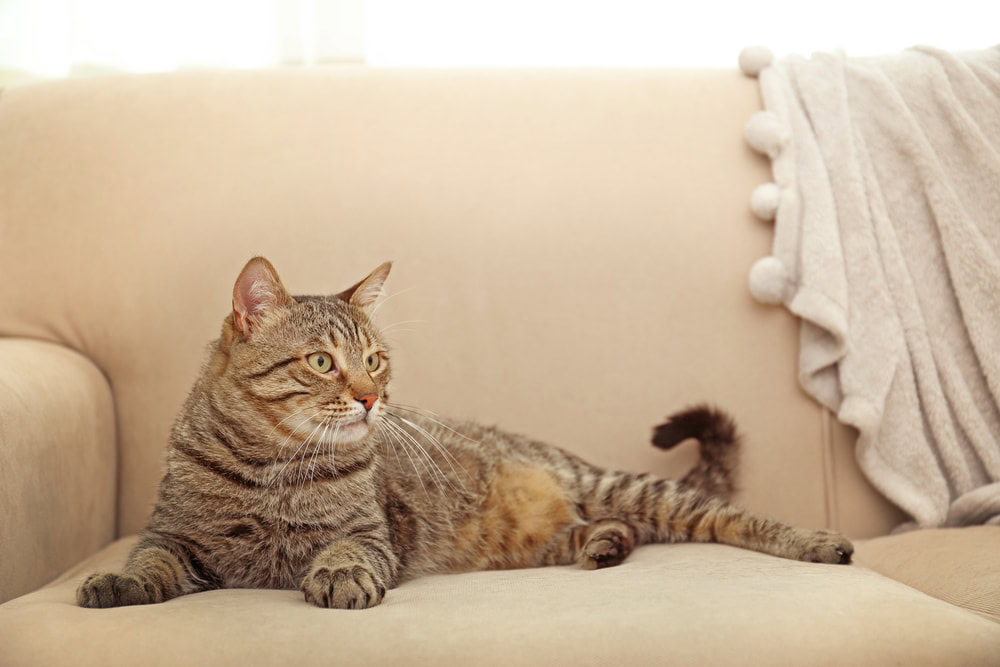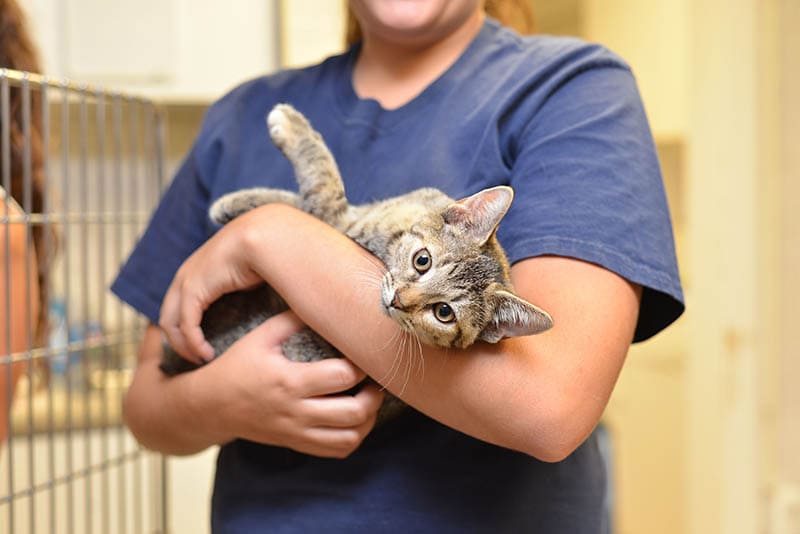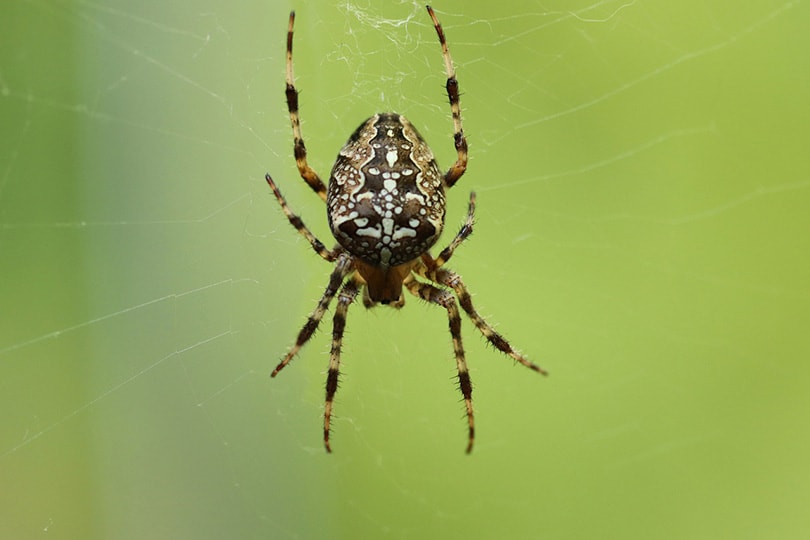VET APPROVED

The information is current and up-to-date in accordance with the latest veterinarian research.
Learn more »Cats don’t know that your furniture isn’t theirs to mark up and destroy. Any piece of furniture in their environment is fair game. If you want to protect your furniture from getting shredded by your cat’s nails, you’ll need to be proactive.
Keep reading to find our tips and tricks for making your furniture less enticing to your cats.

The 5 Top Ways to Cat-Proof Furniture
1. Provide Scratching Alternatives
Perhaps the best way to prevent your cats from using your couch as a scratching post is to set up decoys. The more cat-friendly opportunities for scratching, the fewer pieces of furniture you’ll need to sacrifice.
You should have several different types of scratching posts and at least one in every room your cat spends a significant amount of time in. If your cat isn’t fond of one particular type of scratching post, you may need to experiment to find one that works best for them. Try different textures like carpet, sisal, and corrugated cardboard to see which they prefer.
Try placing the scratching pad or post near the furniture your cat is destroying. Having one nearby will give you a chance to redirect your cat’s scratching behavior when they begin doing it on your furniture.
The Hepper Hi-Lo Cat Scratcher features a modern and clever design that offers cats an appealing place to scratch – and a way to keep them from scratching all the things they shouldn't. Unlike most cat toys (where your cat probably just prefers the cardboard box they came in), cat's flock to this design ... maybe it's because there's cardboard in it!
With its 3-position setup, textured cardboard, and sturdy frame, it encourages their natural scratching behavior, steering them away from clawing at items like furniture, walls, carpets, curtains, and people. The Hi-Lo is a reliable solution to safeguard your home and create a more enjoyable environment for your cat, all while looking modern and stylish. At PangoVet, we've admired Hepper for many years, and decided to take a controlling ownership interest so that we could benefit from the outstanding designs of this cool cat company!
2. Rethink Your Upholstery Fabrics
If you’re in the market for a new sofa, you should think about investing in one that’s made with scratch-proof fabric.
Velvet, for example, has many looped threads, which make it difficult for your cat to get their paws into. Woven fabrics like chenille have dimensionality, which can help disguise scratches. While outdoor fabrics might not top your list for your new sofa, don’t be so quick to discount them. Sunbrella fabrics are a great pick for indoor furniture as they are made to withstand the elements so they hold up great against claws.
3. Make Your Furniture Unappealing
Your cat will be less likely to scratch at your furniture if it has things on it that he doesn’t like. Things like double-sided tape on the arms and back of the furniture in question might be enough to deter him.
Sticky Paws is another great product you can try adding to your furniture. It’s a transparent medical tape that’s simple to apply and remove from any furniture. It works by deterring your cats from jumping on and scratching at the fabrics.
You can also try to create a physical barrier close to your furniture so your cat can’t access it easily. Use cat-safe plants or a magazine rack, for example, to make it more difficult or uncomfortable for them to reach your furniture.
If you are planning to use any spray deterrent, speak to your vet for a cat-safe option, and you might want to test the spray first on an inconspicuous part of your furniture just in case it doesn’t agree with the fabric.
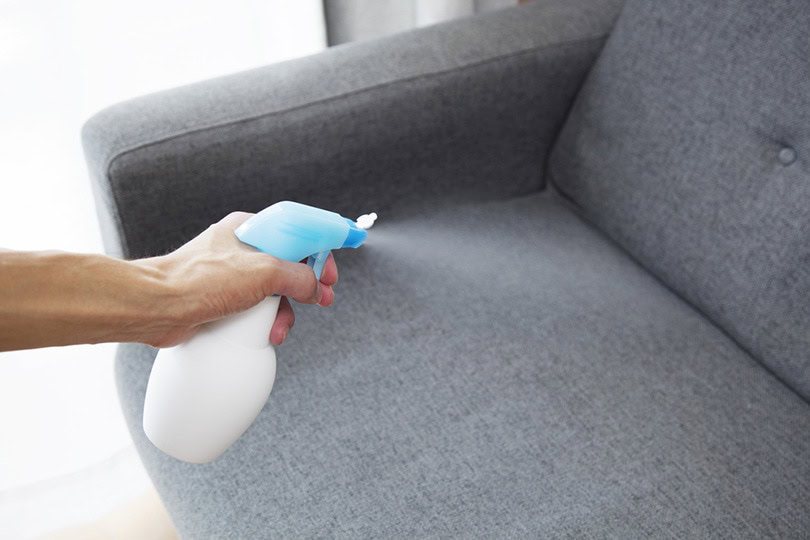
4. Trim Their Nails
Another great way to stop your kitty from destroying your furniture is to keep their nails trimmed and well-kept. Since one of cats’ reasons to scratch at things is to remove the outer layer of their claws, shortening them with regular clippings and keeping them at top condition can make them less damaging and less likely to scratch in the first place.
Nail clipping is a really simple task. Check out our tutorial on how to do it or ask your vet to give you a lesson.
5. Do Not Punish & Use Positive Reinforcement
Any time you see your cat using the scratching post you have provided, make sure you praise them or offer a delicious treat to reinforce the good behavior. Never punish or yell at your cat if they scratch your furniture since this does not achieve the desired effect, breaks the bond between you and your cat, and increases stress.
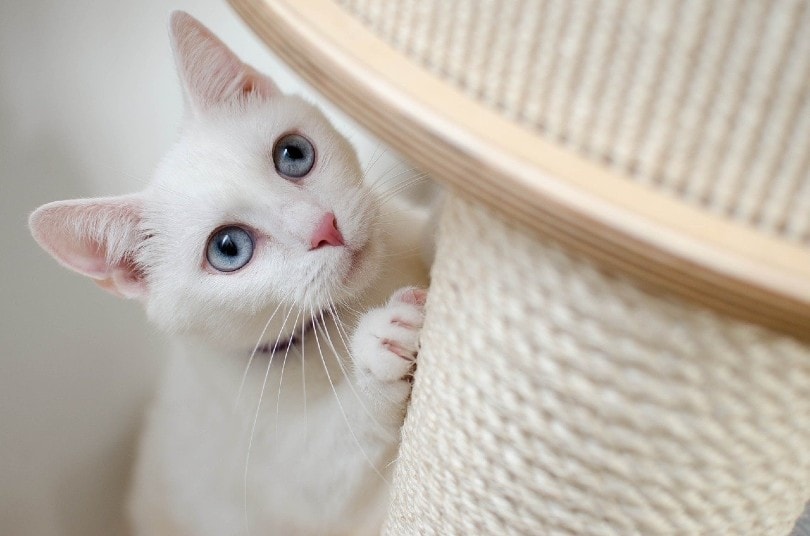

What About Declawing?
Declawing is never the answer. While you might read that this is a fantastic solution, resist the urge. When your cat is declawed, the last bone in their toes gets amputated. This is an inhumane and extremely painful process. Scratching is a natural instinctive behavior that needs to be redirected, not suppressed. Plus, your cat’s claws have a biological function, so amputating the last phalanx of your cat’s toes to get rid of them is never justified.

Final Thoughts
It’s frustrating to spend your hard-earned money on a nice piece of furniture only to have your cat destroy it the day you bring it home. With our tried-and-true methods above, you and your cat should be able to live in harmony with your beautiful, scratch-free furniture.
Featured Image Credit: Africa Studio, Shutterstock
